
A quality link profile still plays a key role in achieving high rankings in search results. Therefore, it is important to regularly monitor links to understand where they come from, how relevant they are to your topic and how they affect the ranking of the site. As an online marketing agency, we know for sure what impact links have on your sites.
In this article, we offer you to consider in more detail what external links are and what their importance is for Google, why you need to analyze them and how to do it.
What are backlinks, how do they affect SEO
Backlinks (backlinks, external links to the site) are hyperlinks that lead to your site from other resources on the Internet. They are one of the ranking factors in search engines such as Google, Bing and Yahoo. The set of all external links that lead to your site is called a link profile. In the promotion strategy, working with links is external optimization of sites. By the way, you can learn a little more about what SEO is in principle in one of the previous articles of our blog.
Search engines consider the number of sites linking to your site as a kind of vote of confidence or recommendations for the target site. The more high-quality and relevant links lead to your resource, the higher its authority and trust from search engines.
However, not all links are equally useful for SEO. Search algorithms take into account many factors when assessing the importance of a link, including:
- Authority and trustworthiness of the link source (donor site)
- Relevance of the topic of the link source to your site
- Quality and usefulness of the content on which the link is placed
- Link attributes (dofollow/nofollow, anchor text)
- Naturalness of the site’s link mass
A large number of low-quality or irrelevant links can harm your site’s ranking in search results. Therefore, site promotion with links should be thoughtful and balanced.
Why look for external links?
Regular monitoring of links from other Internet resources and on competitor sites has several important reasons:
- You can control how many new links your site has received over a certain period, from which sources they come and how this affects search visibility.
- The number of links may include spam, irrelevant or malicious links that must be rejected to avoid sanctions from search engines.
- By studying the links of competitor sites, you can find new opportunities for obtaining links and apply successful promotion strategies.
Checking the link profile allows you to obtain valuable information about the success of the link strategy, which ultimately helps to make informed decisions and make changes. This is especially important to do at the start of work when it comes to promoting a young site in search engines, because in this case it is important to get not only an effective, but also a safe external promotion strategy.
How to Find External Links for Free
Google Search Console
Google Search Console is a free tool that allows webmasters to manage their site and track its performance in search results. With it, you can quickly find all the links to the site. To do this, go to the “Links” section using Google Search Console.
Here you will find information about the links pointing to your site, including the number of links and a list of donor sites. Use the information provided to evaluate the links pointing to your site and identify potential problems.
Neilpatel
Neilpatel.com offers a free link analysis tool that allows you to quickly check the number of links to your site and assess their quality.
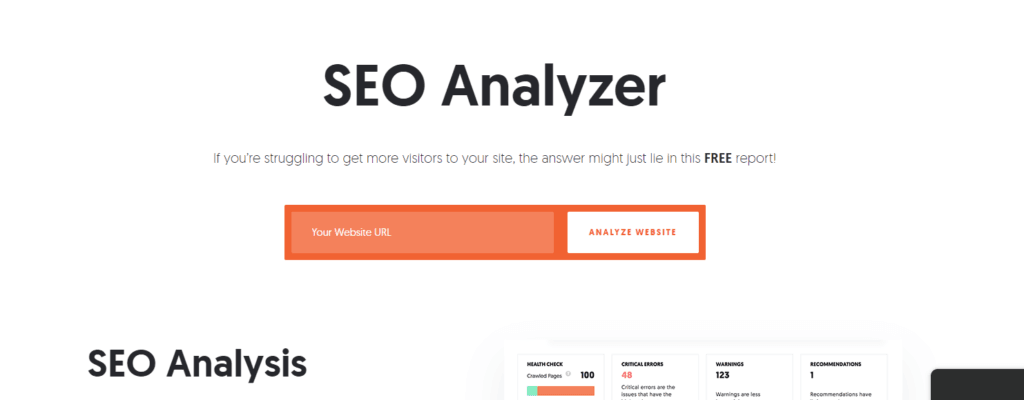
To use:
- Go to neilpatel.com.
- In the “SEO Analyzer” section, enter the URL of your site.
- View the report: you will get information about the number of links, as well as the domains from which they lead.
How to find links to a site using paid services
There are many paid tools on the market to find out everything about the links leading to a site, which provide advanced data and additional features. With their help, you can not only simply check the number of links leading to a site, but also fully analyze their quality. Let’s consider some of the most popular:
Ahrefs
Ahrefs is one of the leading SEO analytics tools, widely used by marketers and optimizers around the world. In the Backlinks section, you can get detailed information about the links, their sources, anchors, placement date, etc.
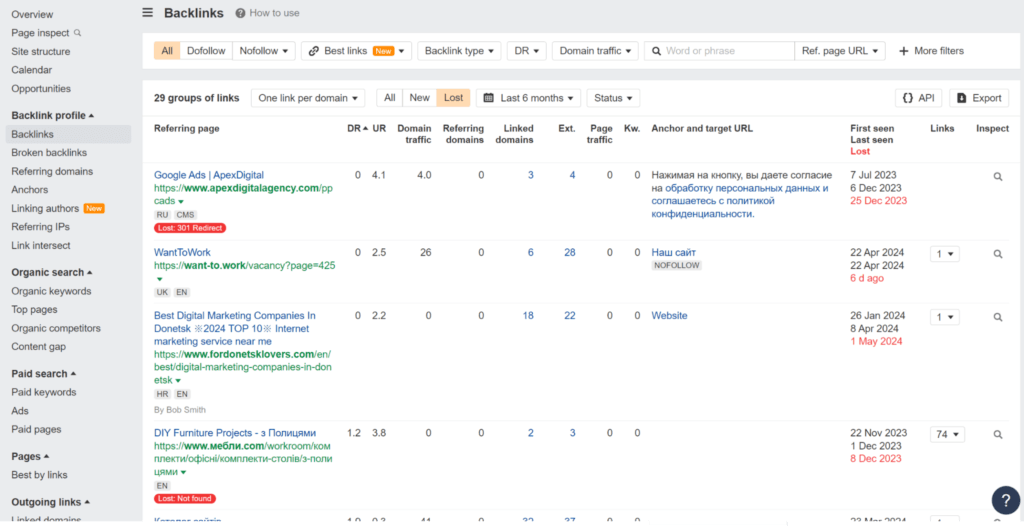
Ahrefs Advantages:
- Large database of backlinks
- Filters and grouping of links by various parameters
- Donor analysis
In addition to providing detailed data on the donors of the site, Ahrefs also offers additional features for a comprehensive analysis of those who link to your site:
- Monitoring new and lost links
- Filtering and grouping of links by various parameters (link type, metrics, anchor text, etc.)
- Comparison of link profiles with competitors
- Automatic identification of potentially low-quality links
Ahrefs also allows you to track the growth or decline of link weight over a certain period of time, which helps to assess the effectiveness of your link building strategy.
Serpstat
Serpstat is a comprehensive tool for monitoring SEO strategies, which includes a module for searching for links to the site.
In the Backlink analysis section, you can find a whole set of useful tools that will allow you not only to check links, but also to get detailed data about each of them: link source, type (dofollow/nofollow), anchor text, discovery date, and much more.
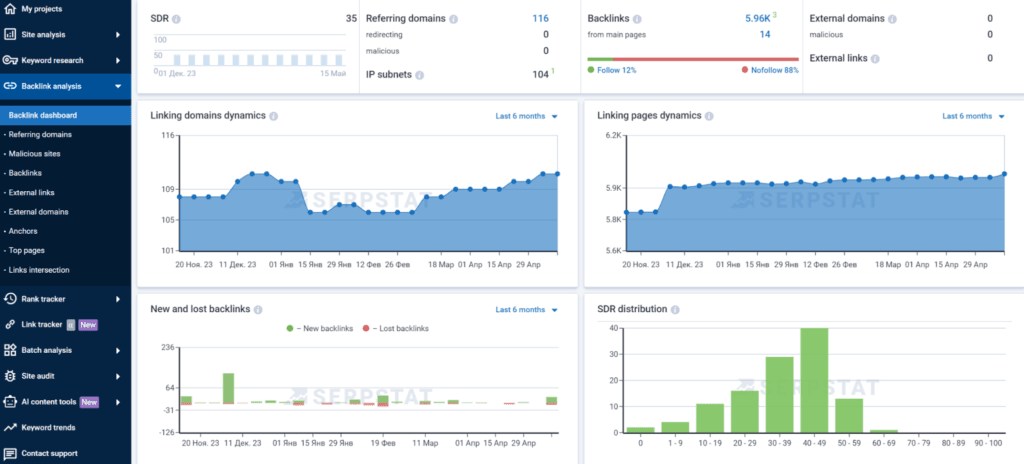
In addition to link data, Serpstat provides a number of additional features for in-depth analysis:
- Visualization of link weight in the form of graphs and charts
- Automatic identification of potentially spammy or low-quality links
- Tracking changes in the link profile over time
- Integration with other Serpstat modules for a comprehensive SEO audit
Serpstat also allows you to export link data to various formats (CSV, Excel, etc.) for further analysis.
Seranking
Seranking is another popular service for a comprehensive SEO audit, which includes a module that allows you to check for links leading to the site. In the Backlink Checker section you will find all the information about the pages that are most often linked to.
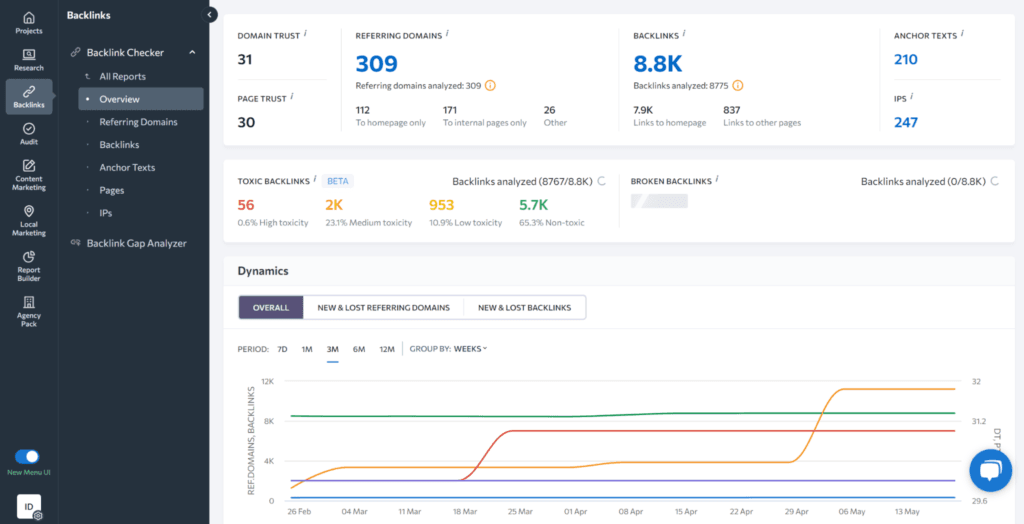
Advantages of Seranking:
- Large database of links
- Visualization of the link base
- Comparison with competitors
- Filtering and grouping of links by various parameters
Semrush
Semrush is one of the most famous and multifunctional SEO tools on the market. It also contains a large module for checking the number of donors and the quality of links.
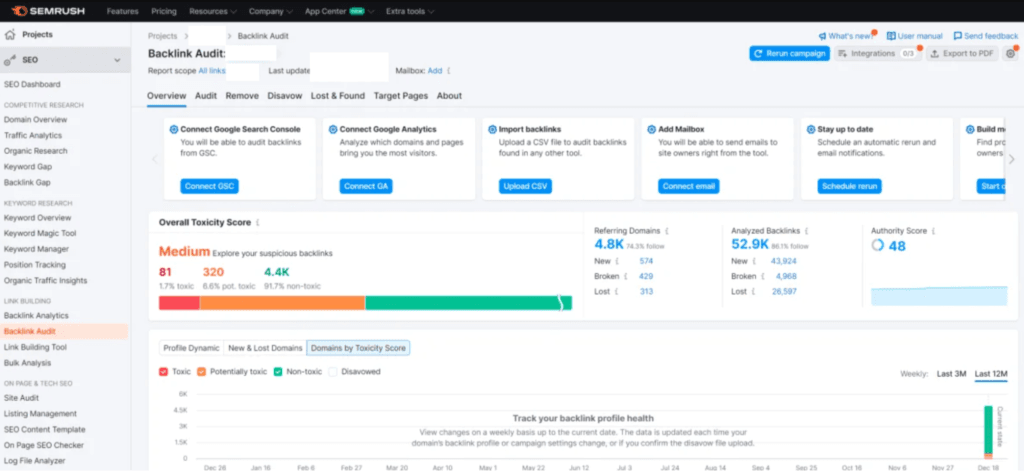
What Semrush can do:
- Track the presence of external links on the site – new and lost
- Evaluate the quality and authority of links
- Visualize the profile of backlinks
- Analyze the links of competitors
Majestic
Majestic is another authoritative tool for analysis. With its help, you can also comprehensively check the profile of links, examining a number of indicators, some of which are unique to this service. Some other features of the platform:
- Visualize the profile of backlinks in the form of an interactive map
- Filtering links by various parameters (link type, anchor text, source region, etc.)
- Analyze historical data on links over long periods of time
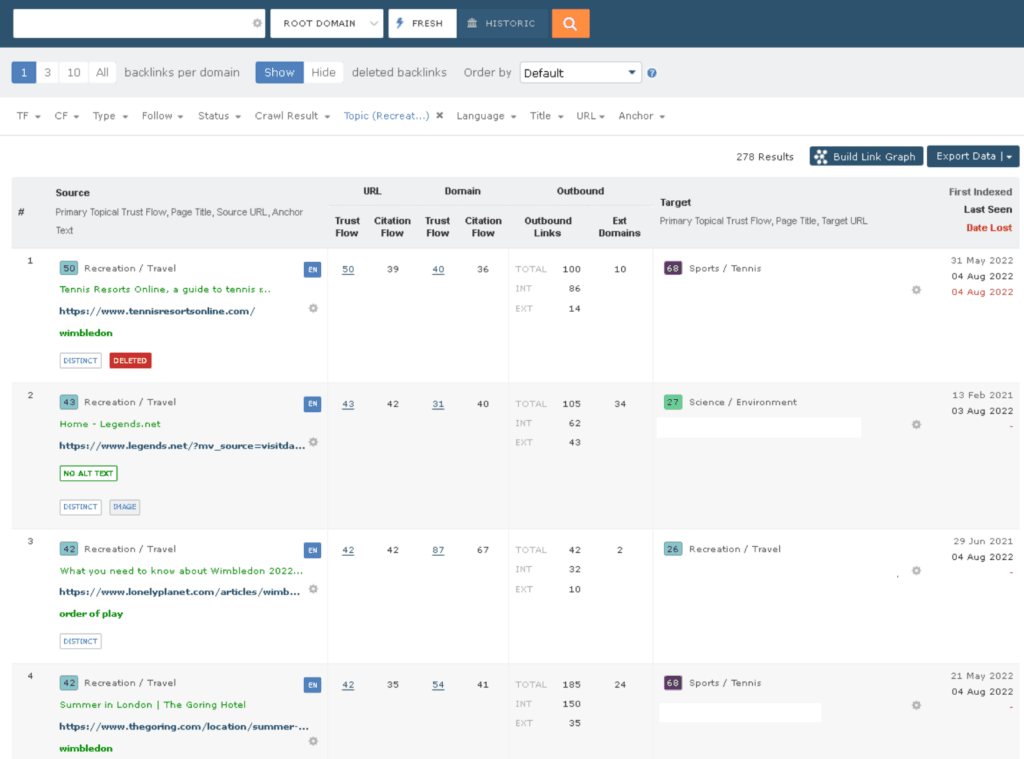
Majestic also provides detailed information about IP addresses and domain owners, which can be useful when detecting networks of spammy sites or related links.
Link Research Tools
Link Research Tools is a specialized platform for comprehensive analysis and management of backlinks. Its advantages and functionality:
- A large database with billions of links, regularly updated
- Link filtering by many criteria (authority metrics, site types, anchor texts, etc.)
- Automatic identification of potentially low-quality or spammy links
- Monitoring of changes in the link profile and notification of new/lost links
- Ability to send requests to remove malicious links from the database
How to do a competitor link analysis
Analyzing the links of competitor sites can provide valuable ideas for obtaining new backlinks and improving your own link strategy.
Here are some steps to analyze the backlinks of your competitors’ sites:
- Identify who your main competitors are. Make a list of relevant sites with which you compete in search results.
- Analyze their link bases using a convenient SEO tool for you. Pay attention to which donors this mass of links to the site came from, as well as what anchors are used there.
- Identify promising sites. Filter out the links that seem potentially useful to you for your site and add them to the list for further work.
- Study the content and requirements of these sites. Determine what content and promotion strategies can help you get links from these sources.
- Assess the quality and authority of the links. Not all links that competitors receive may be useful for your site. Focus on the most relevant and high-quality sources.
- Develop a link building strategy based on the ideas you receive and start implementing it step by step. Remember that the increase in links to the site should look natural to the search engine.
Analyzing the link weight of competitors can be a valuable source of inspiration for your own link strategy, but you should not blindly copy their approaches. It is important to adapt the ideas received to your topic and objectives, while maintaining the uniqueness and naturalness of the backlink profile.
How to assess the quality of links
When analyzing external donors, it is extremely important to pay attention to their quality, not just quantity. Low-quality and spammy links can not only not be beneficial, but also harm your site’s ranking in search results.
Here are some criteria by which you can check the links leading to your site:
- Relevance of the source. Links from sites close to your topic are usually considered more valuable than links from completely irrelevant resources. That is why it is so important to assess where the links lead to the site.
- Authority of the source. Links from highly authoritative sites that rank well are more valuable than links from little-known or spammy sites.
- Quality of content. Links placed in high-quality, unique and useful content are usually more valuable than links from low-quality content.
- Link attributes. Links with relevant anchors and dofollow attributes are usually more useful and of high quality.
- Traffic source and visibility. Links from sites that receive organic search traffic and have high visibility are usually more valuable than links from resources with low traffic.
The tools we reviewed above provide various metrics and indicators for assessing link quality. Here are some of them:
- URL Rating (UR) and Domain Rating (DR) from Ahrefs. These metrics reflect the “strength” of a link or domain based on the number and quality of inbound links. The higher the UR and DR values, the more authoritative the link source is considered.
- Domain Authority (DA) and Page Authority (PA) from Moz. Similar to Ahrefs metrics, DA and PA also evaluate the authority of a domain and an individual page, respectively, based on the link profile.
- Authority Score from Semrush. This is an overall indicator of the quality and authority of a link, taking into account various factors such as source relevance, toxicity, etc.
- Spam Score. Some tools provide an estimate of the likelihood that a link source is spammy or low-quality.
- Majestic Trust and Citation Flow. These are metrics developed by Majestic to assess the trust and authority of a linking domain.
In addition to using these metrics, it is also important to manually analyze the linking source sites. Pay attention to the quality of the content, design, usability, the presence of advertising, and other factors that can indicate the trustworthiness and authority of the resource.
Don’t rely on just one metric or tool. A comprehensive approach that combines different methods of assessing the quality of the sites linking to you will help you make more informed decisions in your linking strategy.
How to Disavow Bad External Links
If you find low-quality, spammy, or potentially harmful links pointing to your site during your analysis, it’s important to take steps to disavow them. Having a large number of such links can negatively affect your site’s search engine rankings.
Here are some ways to disavow unwanted links:
- Disavow Tool. This is a separate tool from Google that allows you to create a file with the domains and URLs from which you want to ignore links. After you submit this file to Google, the system should stop considering links from these sources when ranking your site.
- Contact the webmasters of the link-donating sites and ask them to remove the unwanted links. This approach can be effective, but it requires significant effort, especially if there are many such links.
- Ignore links. In some cases, if the number of low-quality links is small and they do not have a significant negative impact, you can simply ignore them. The main thing is to focus on getting quality links from reliable sources.
Conclusions
Working on the quality of link weight is an important aspect of any potentially successful SEO strategy. The presence of high-quality and relevant inbound links not only helps to improve the ranking of a site in search engines, but also increases its authority, and can also work as a “word of mouth”.
Remember that backlinks are just one of many factors in SEO. To achieve the best results, it is important to have a comprehensive approach that takes into account all aspects of search engine optimization: content, technical optimization, usability and much more. However, not all site owners can fully immerse themselves in the process of external promotion, especially if it is a complex niche or a large site, for example, if it is SEO promotion of an online store. The best solution would be to turn to professionals.




